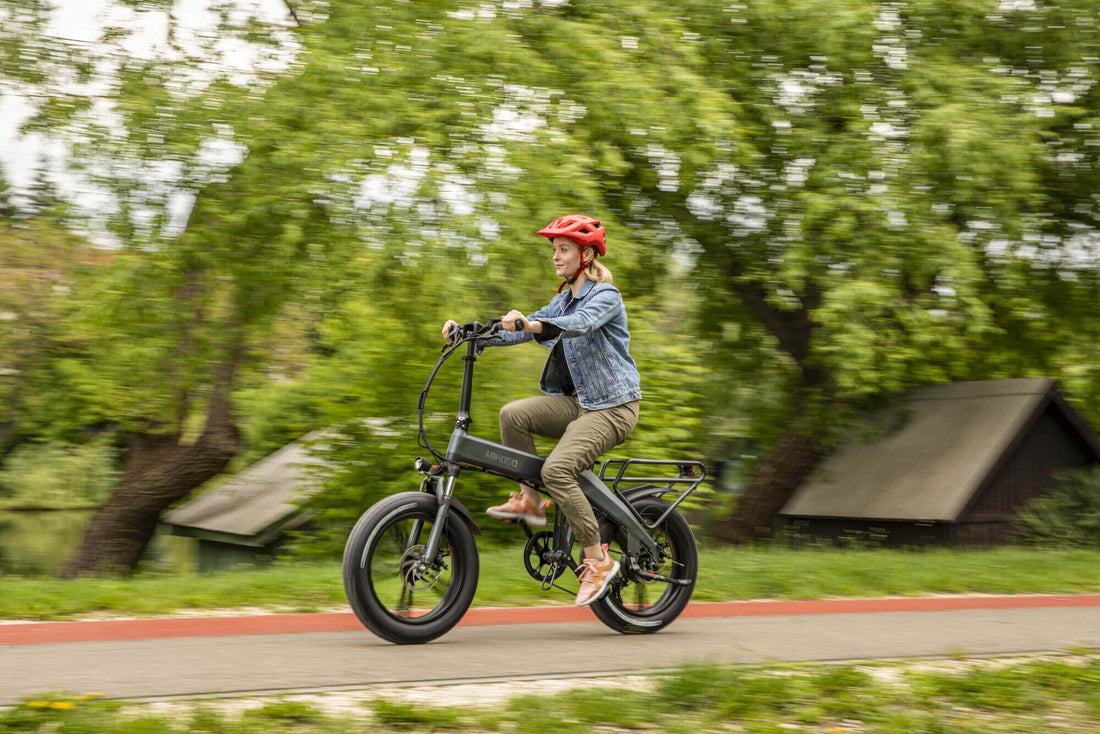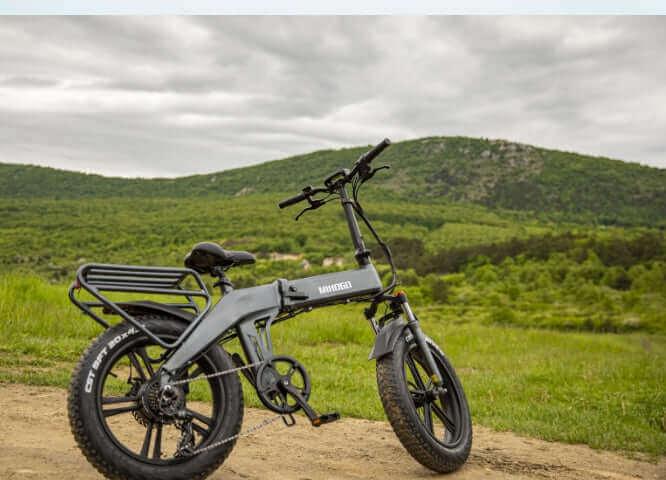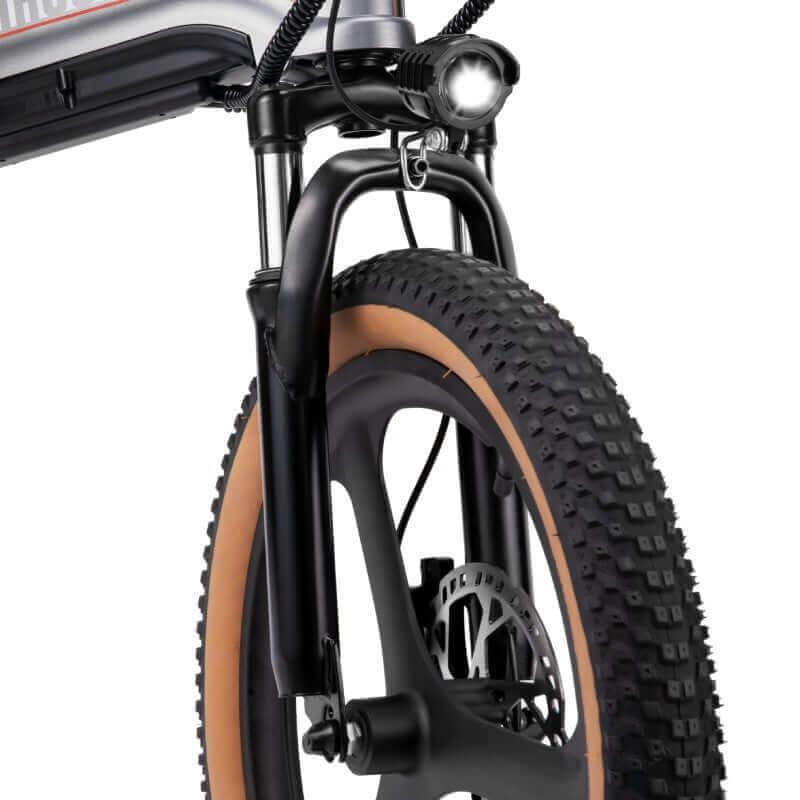Electric bicycles, also known as e-bikes, are revolutionizing the world of cycling. This innovative approach to cycling is not just an emerging trend, but rather, the future. If you've found your way to this comprehensive guide on e-bikes, it's evident you have already acknowledged the potential of electric-powered bicycles to enhance your cycling experience. You are about to embark on a thrilling journey!
Embrace the E-Bike Revolution: Boosting Your Ride and Life
E-bikes are the epitome of modern technology and design, similar to your beloved standard bicycle but turbocharged with a battery-operated motor. These marvels offer riders the ability to augment their pedaling effort, making cycling more accessible and enjoyable for a wider audience.
The E-Bike Advantage: Cycling with a Helping Hand
The appeal of e-bikes lies in their ability to provide that extra power when tackling hills, battling headwinds, or covering significant distances. They are the perfect solution for commuters aiming to avoid the sweat-inducing morning ride to work. With an e-bike, you can easily haul your daily essentials such as work clothes, lunch, laptop, and mobile phone.
E-Bikes: The Epitome of Versatility
E-bikes are not only ideal for commuting but also for recreational uses. They can help level the playing field between cyclists of varying fitness levels, make longer trips manageable, and enable tasks previously difficult without motorized assistance, such as towing a trailer filled with groceries or kids. Once you embrace the e-bike revolution, you'll undoubtedly appreciate its impact on your daily convenience.
Freedom and Flexibility: E-Bikes' Legal and Practical Benefits
E-bikes are legally considered bicycles, meaning they require no license, registration, or insurance – a significant cost saver. Their impressive speed (up to 28 mph) and easy maneuverability make them an efficient alternative to traditional cars, particularly in traffic-prone urban environments.
Wellness and Fun: The E-Bike Fitness Factor
Despite the electric assist, e-bikes still provide a healthy dose of exercise. Their efficient design encourages pedaling, extending battery life and promoting physical fitness. Whether for commuting, fitness, or sheer enjoyment, e-bikes offer a flexible, enjoyable, and eco-friendly mode of transport.
A Deeper Dive into E-Bike Classifications
There are three basic categories of electric bikes:
-
TYPE 1 E-Bike – Pedal Assist: This type requires pedaling for the motor to activate, creating a seamless blend of human and electric power. It may or may not include a throttle feature.
-
TYPE 2 E-Bike – Throttle Only: This version features a motor that can operate independently of the pedaling, providing power at the twist of a throttle.
-
TYPE 3 E-Bike – Speed Pedelec: The fastest category of e-bike, it can reach speeds up to 28 mph while still being legally classified as a bicycle. A helmet is usually required for this type of e-bike.
Choosing the Right Motor for Your E-Bike
The rapidly advancing e-bike industry has narrowed down to two primary motor types, both known for their reliability and energy efficiency:
-
Rear Hub Drive Motors: Available as Direct Drive (suited for high-speed commutes and moderate hill-climbing) or Geared Hub (ideal for hauling heavy loads or tackling steep hills).
-
Mid Drive / Center Drive Motors: Typically offering the longest range, these are versatile motors suitable for various applications. Their central location on the bike provides better weight distribution, leading to improved handling.
Selecting the Ideal E-Bike for Your Needs
The process of choosing the right e-bike starts with identifying your cycling needs and preferences, much like shopping for a traditional bike. Consider factors like comfort, speed, distance, terrain, and usage, to find the perfect e-bike that suits your lifestyle:
-
Comfort / Cruiser: Ideal for recreational riders seeking a relaxed and comfortable ride. Available in traditional and "step-through" designs.
-
Hybrid / Commuter: Designed for those who cover long distances swiftly. Perfect for daily commuting and city riding, and often equipped with practical features such as racks and integrated lighting.
-
Mountain / Off-road: Perfect for tackling off-road trails, with superior hill-climbing ability and improved control due to the motor's central position.
FAQS
Before delving into the world of e-bikes, it's natural to have queries. Here are answers to some common questions:
- Are e-bikes safe to ride?
- Yes, e-bikes are as safe as traditional bicycles. The key to safety lies in responsible riding, following traffic laws, and maintaining your e-bike properly.
- What's the lifespan of an e-bike battery?
- The lifespan of an e-bike battery can range from two to five years. It largely depends on how well it's maintained, how often it's used and charged, and the quality of the battery itself.
- Do I need a special license to ride an e-bike?
- In most jurisdictions, no special license is needed to ride an e-bike. However, laws can vary by location, so it's essential to check local regulations.
- Can I ride an e-bike if the battery runs out?
- Yes, if the battery depletes, an e-bike can be ridden just like a regular bike.
- What is the weight limit for an e-bike?
- This depends on the specific model, but typically, e-bikes can comfortably accommodate riders up to 250 lbs (113 kg). Always check the manufacturer's specifications before purchasing.
- How fast can I go on an electric bike?
- Maximize your speed on top-tier electric bikes - reaching impressive assisted speeds between 18 and 28 mph. The specific maximum speed of your electric bike depends on its unique design and system. Once you exceed the intended high speed of your e-bike, the motor automatically shuts off. However, with the right strength and favorable conditions - such as going downhill - you can surpass the bike's top speed. Leveraging the power of electric bikes allows you to take advantage of the freedom to pedal as fast as you want. Ensure you're informed about the cutting-edge features of electric bikes to maximize your experience!
-
How far can I go on one charge?
The range of an electric bike on a single charge can span from 15 to 60 miles depending on the model. However, the actual distance you can travel will be influenced by various factors. Your weight, combined with the weight of any cargo you're carrying, can affect the bike's power consumption. Additionally, the type of terrain you're traversing, the steepness of any hills, and wind resistance can impact the bike's efficiency. Finally, the extent of your own pedaling and the power mode you've chosen also play a crucial role in determining the range. -
Can I ride an e-bike in the rain?
Absolutely! Electric bikes are designed with waterproof capabilities straight off the assembly line, making them fully capable of withstanding rides in the rain. However, it's important to avoid submerging the motor or battery, as these crucial components could potentially get damaged. Also, high water pressure could lead to circuitry issues within the electronic systems. Similar to traditional bikes, exposure to water is okay, but it's always best to avoid it when possible. Remember, while an e-bike can handle wet conditions, water never truly enhances its performance. Stay informed to ensure a safe, efficient riding experience in all weather conditions! -
How much does it cost to operate an electric bike?
Operating an electric bike is impressively cost-effective, typically ranging from 6 to 14 cents per mile for charging and maintenance, based on electricity costs. When you compare this with the operational costs of a car, the savings are striking! Embrace the affordable, eco-friendly convenience of e-bikes for a revolutionized transportation experience. -
Will a conventional bike keep me in better shape?
Indeed, a conventional bike could potentially help you maintain better physical fitness - but that's only if you use it as frequently as an electric bike. Many e-bike riders discover the benefits of electronic assistance when tackling hills or riding against the wind. This advantage often diminishes any reluctance they might have about cycling, encouraging them to ride more frequently. As a result, some e-bike users may actually improve their fitness due to increased riding frequency. Embrace the power of e-bikes to transform your cycling experience and possibly even enhance your overall fitness!
We trust this guide provides you with a comprehensive understanding of the fascinating e-bike universe. We invite you to visit our store for more details and to discover firsthand the incredible potential of these groundbreaking transportation solutions. Moreover, for additional support and information, we encourage you to explore our comprehensive FAQ page. If you're curious to hear about the experiences of others, don't miss out on our REVIEWS page, which is brimming with insightful video testimonials. Immerse yourself in the world of e-bikes and get all your questions answered!
The time is ripe to become part of the e-bike revolution and amplify your riding experience. Let's power up your journey together!








